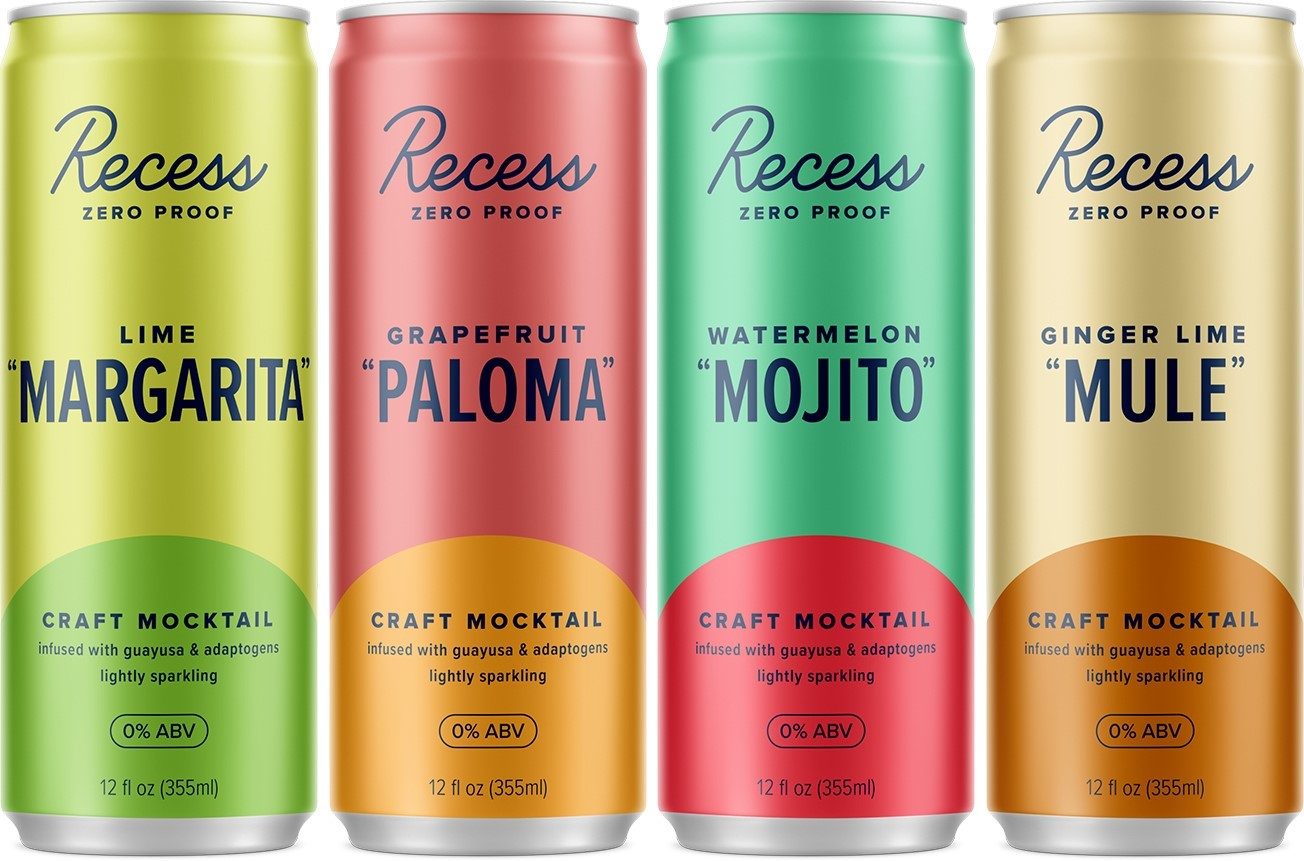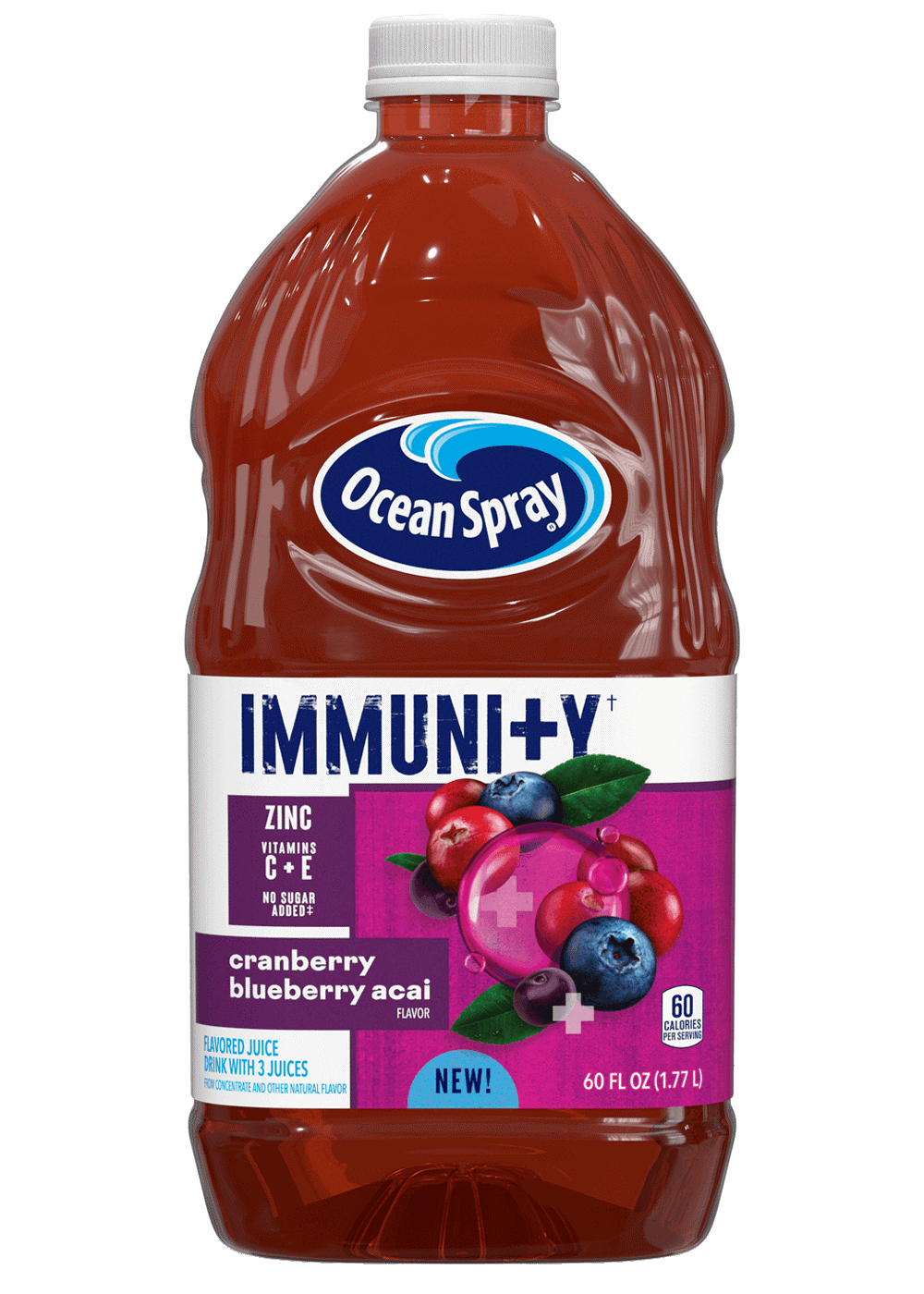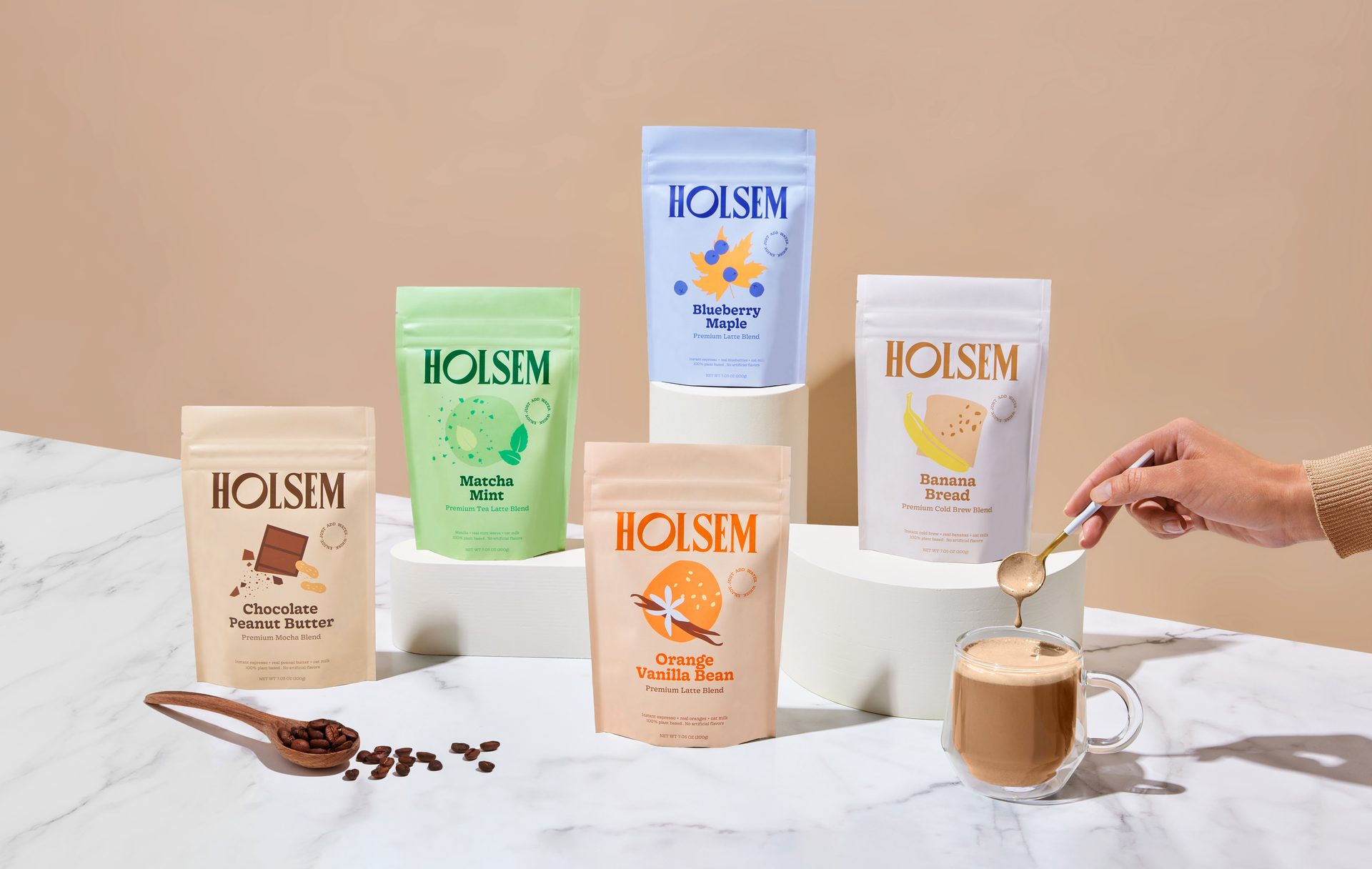Beverage
R&D
The many layers of flavor development
By Jessica Jacobsen
Hybrid flavor creations, from nature influence future for flavor trends
(Image courtesy of Skinte)
When creating complex, intriguing forms of music, creators will layer individual sounds that in the end result in a cohesive musical experience. In today’s beverage development, formulators are taking a similar approach, as they are layering flavors to elevate the next generation of drinks.
“Crafting a great hybrid flavor requires a balance between approachability and uniqueness, making it stand out on the shelf,” says Simon O’Brien, senior creative manager at Flavor Producers, Valencia, Calif. “To create hybrid flavors, it is recommended to begin with a familiar taste and gradually add complexity to it.
“For instance, flavors like pineapple lychee, lemon elderflower and black cherry chipotle are all examples of delicious profiles that offer a sense of familiarity while incorporating unique elements,” he continues. “By starting with a familiar taste and gradually incorporating unique ingredients, it is possible to create exciting new flavor combinations that appeal to a wide range of consumers.”
K.C. Kuder, senior marketing communications specialist at Synergy Flavors, Wauconda, Ill., highlights how hybrid flavors can help a brand stand out from competitors.
The embracement of mocktails is influencing flavor trends. (Image courtesy of Recess)

“Tradition with a twist has been a way we’ve helped customers create products that are a bit different than the traditional fruit profiles we’re all accustomed to, and love,” she says. “Instead of just a strawberry profile, try a wild strawberry, or pair it with pineapple for a refreshing, tropical twist. We’ve seen a lot of success combining exotic or tropical fruits with mainstream flavors to help brands find that niche profile that sets their products apart from others on the market.”
Philip Caputo, marketing and consumer insights manager at Virginia Dare, Brooklyn, N.Y., also points to the importance of strong foundational flavors when approaching hybrid flavor development.
“This is what we call Elevated Classics, and it’s a growing category within our portfolio,” Caputo says. “It’s no secret that we think vanilla is one of the best foundational flavors for a shake or other beverage.
However, we also think it’s one of the best complementary flavors to add some intrigue and differentiation to your application.
“Elevating a classic flavor like vanilla adds a sophisticated twist,” he continues. “Upgraded examples include vanilla tarragon blackberry, vanilla anise, and vanilla bean white chocolate. How delicious do those sound? Other popular flavors ripe for this trend include chocolate, strawberry, banana, coffee, and more.”
Alexandra Kirsch, marketing associate at Allen Flavors, South Plainfield, N.J., also highlights how incorporating familiar flavors makes hybrid creations more approachable.
“The most popular type of hybrid flavors combine familiar flavors with ones that are new and exciting,” Kirsch says. “Consumers gravitate toward these flavor combos because they get the flavor they already enjoy while experiencing a unique new flavor.
“Popular hybrid flavors include mango-passionfruit, papaya-lime, pomegranate-acai, and strawberry-guava,” she continues. “Another popular category in hybrid flavors is nostalgia, which reminds consumers of their childhood and brings back happy memories. Some examples of these include strawberry-vanilla, orange-cream, and chocolate-mint.”
“The most popular type of hybrid flavors combine familiar flavors with ones that are new and exciting. Consumers gravitate toward these flavor combos because they get the flavor they already enjoy while experiencing a unique new flavor.”
— Alexandra Kirsch, marketing associate at Allen Flavors
Rebecca Shurhay, senior marketing specialist at Flavorchem, Downers Grove, Ill., explains that food and beverage manufacturers will continue to explore with flavor combinations thanks to the premiumization trends proliferating throughout the consumer packaged goods market.
“Food and beverage categories will continue to blur together to create novel eating experiences,” Shurhay says. “Cross-category hybrid concepts like coffee flavored energy beverages, juice tea beverages, flavor pairings between desserts and beverage, along with unique formats and textures provide consumers a more premium experience.
“Flavor combinations including mango passion fruit, watermelon calamansi, strawberry cardamom, chocolate churro, cayenne mocha, and lavender chamomile are examples of hybrid creations that have potential to perform well because the pairing of familiar with less familiar flavors makes taste trial more approachable for consumers,” she continues.
Andy Keane, marketing manager at Brothers International, Rochester, N.Y., notes that the proliferation of flavor options has allowed consumers to “have it all.”
Experts note that certain flavors are commonly associated with a functionality attribute in beverages. (Image courtesy of Ocean Spray)

“One thought is that consumers want it all, but do not want to commit as there are so many options out there these days,” he says. “Hybrid flavors allows the consumer to get the best of both worlds (mango, pineapple, guava juice or kombucha) versus just buying a single flavor. It seems more custom-made, too. We love customizing things.”
Jennifer Zhou, global direct of product marketing and flavors at ADM, Chicago, points to a 2021 report from FMCG Gurus titled “Flavors, Colors & Textures Report” where the market research firm found that 68% of global consumers indicated a willingness to pay a premium for beverages that feature a new and unusual flavor.
“Carbonated fruit beverages, colas, sparkling waters and juices are bursting with new flavor possibilities, providing whimsical exploration to adventurous consumers,” she says. “Hybrid flavor creations resonate with consumers because they offer a new and exciting taste experience, while still incorporating familiar and popular flavor profiles.”
Zhou points to tangelo, a citrus hybrid, which has seen growing interest from U.S. consumers.
“As a hybrid of a tangerine and a pomelo/grapefruit, they are prized for juiciness and a mild sweet flavor,” she says. “This particular variety is great in both [ready-to-drink] (RTD) tea and hard tea varieties for sessionability and taste. Based on our citrus consumer research, this flavor has unique appeal for energy drinks as well as low-proof alcoholic RTDs.”
Cues from nature
Although hybrid flavor creations are exerting stronger influence on beverage development, experts also point to the impact that health and wellness has on consumers’ beverage choices.
“The past few years have reshaped the flavor landscape, and the increased focus on health and nutrition has opened new flavor possibilities for formulators,” Virginia Dare’s Caputo says. “Flavor profiles inspired by natural ingredients with inherent therapeutic properties or association from aromatic taste cues are gaining in popularity because of the health benefits associated with them.”
ADM’s Zhou echoes similar sentiments, calling attention to fruit and botanical flavor solutions.
“Consumers are increasingly seeking functional beverage offerings to support their health and well-being goals, and this is impacting which flavors are trending across beverage categories,” Zhou says. “As a result, we’re seeing citrus and fruit flavors, as well as other botanicals, in various beverage formats, which consumers are associating with products that may be formulated to support aspects of well-being.
Plant-based foods and beverages are prompting the use of more exotic flavors, experts note. (Image courtesy of Holsem)

“Fruit-forward and botanical flavor profiles also meet consumer perceptions as being ‘closer-to-nature,’” she continues. “Plus, consumers tend to be more familiar with these flavors and may perceive them to be better for themselves, as well as the planet.”
Megan Byrnes, marketing manager at Gold Coast Ingredients, Commerce, Calif., explains that as health and wellness became more prevalent, beverage flavor profiles worked to replicate those cues from nature.
“In the beverage industry, health and wellness are influencing flavor trends with more fresh and natural flavor profiles,” she says. “For example, orange, lemon, strawberry and watermelon flavors have always been popular in beverages except the flavor profiles used to be more candy like or artificial. In today’s beverages, consumers are seeking fruit flavors that are true to nature and replicate the taste of fresh fruits.”
Synergy’s Kuder also notes the shift away from candy-like flavors, but also calls attention to citrus, berry and botanical flavors as health-and-wellness friendly flavors.
“We anticipate botanical flavors will continue to gain momentum, as these profiles have been slowly helping the beverage segment provide new, seemingly more complex, flavor blends in recent years ― such as watermelon or strawberry blended with basil or mint,” she says. “Synergy Flavors highlighted ‘Botanical Bounce Back’ in its 5 trends to Watch in Non-Alcoholic Beverages for 2023, citing health and wellness as a major driver for these profiles. Rose, ginger and hibiscus have already seen major growth, both in retail and foodservice beverages.”
Erin O’Donnell, market manager at FFP, Lake Mary, Fla., explains that health and wellness’ impact on flavor trends has become two-fold. “First, there is a need for modulation technology to assist with the different ingredients going into a product,” she says. “For a low/no sugar product, modulation can help to round out the sweetness profile of a product, or cover up any off-notes coming from high-intensity sweeteners.
“We are also seeing inspiration in flavor coming from healthy ingredients, such as fruits and botanicals,” O’Donnell continues. “FFP’s portfolio boasts both natural flavors, and tea and botanical extracts, which complement health and wellness beverages.”
Flavor Producers’ O’Brien also highlights how the health and wellness movement has shaped consumer flavor choices.
“An example of this can be found in the growing alcohol alternatives market,” he says. “Non-alcoholic ready-to-drink and spiritless brands are using unique flavors to replicate the experience of drinking alcohol, while also creating exciting herbal and botanical blends to produce more sophisticated non-alcoholic beverages. This approach has led to a new set of taste profiles and formulation challenges, which have driven the development of non-alcoholic flavor solutions in the industry.”
FFP’s O’Donnell adds that the rising interest in non-alcohol drinks is allowing beverage-makers to utilize the flavor profiles that consumers love while also delivering on various functional properties.
“Mocktails are also increasingly important for consumers who are looking for alternatives to traditional alcoholic beverages,” she says. “Whether it is celebrating the love of cocktail culture, or exploring sober choices, consumers are finding that mocktails can deliver on the flavor combinations that they love, without the alcohol. There is also some cross-over here with functional beverages, where consumers are choosing mocktails that have calming or energizing ingredients to enhance the social situation.”
GCI’s Byrnes expects that the influence of alcohol-free creations will continue to flourish in the flavors market.
“I predict additional cocktail-inspired flavors will emerge in categories like carbonated waters, non-alcoholic, and functional beverages,” she says. “For example, non-alcoholic peach rosé wine flavor or watermelon margarita flavor that gives you the full cocktail profile including flavor notes of tequila.”
Meanwhile, Dan Machtemes, director of research and development at Allen Flavors, notes that health and wellness can take on a more specified approach with functional beverages. As such, a collection of flavors are finding themselves associated with functional attributes.
“One way health and wellness influences flavor trends is through the demand for products that offer functional benefits, such as boosting immunity, reducing inflammation, or promoting gut health,” Machtemes says. “These products often offer citrus flavors, including lemon, orange, and grapefruit. Other popular flavors include botanicals, such as ginger and chamomile, which are known to help with gut health.
“Another way we see the impacts of health and wellness on flavor trends is that many good-for-you ingredients can be bitter or have an earthy taste,” he continues. “Our product developers must pair the correct flavors with these bitter compounds to make them palatable. For example, citrus flavors work well with bitter compounds in that the juicy, acidic flavor profile can help hide the bitterness of some of the active ingredients.”
With the global functional beverage market projected to grow at a compound annual growth rate of 10.49% by 2026, Flavorchem’s Shurhay highlights the importance of selecting flavors that align with those functionalities.
“Skin, hair, immune, and gut health, along with energy support, endurance, and enhanced hydration are top rated consumer need states,” she says. “Selecting a flavor that complements the functional ingredient will help consumers create a stronger association with the function (i.e., a hydration solution paired with watermelon).”
Shurhay also anticipates a burgeoning market for floral solutions. “Floral flavors are gaining popularity because of their inherent healthy and natural attributes,” she says. “According to Innova Market Insights, floral flavors have been growing with a 21% CAGR for at least the past five years and the global market is expected to reach $1,489.3 billion by 2025 according to Food Ingredients First. Florals including lavender, rose, cardamom, and cherry blossom are emerging in beverages, especially within coffee, tea, and carbonated soft drinks.”
GCI’s Byrnes prognosticates increased interest for florals, particularly when it comes to hybrid creations.
“We are also seeing floral hybrid flavors amongst beverages like carbonated waters, hard seltzers, cocktails, and non-alcoholic mocktails like strawberry hibiscus, jasmine peach, lychee rose, and lemon elderflower,” she says. “These flavors resonate with consumers because they provide new experiences and taste great at the same time.”
Brothers’ Keane notes that adoption of plant-based food and beverages also is impacting the flavors market.
“The consumer is getting quite educated with the rush of plant-based food and beverages on the market the past several years,” he says. “It’s allowing CPG companies to use more exotic flavors to attract these consumers who have been buying these products for years. New flavors like dragon fruit, acai and prickly pear are some of the newer trends we are seeing emerge.” BI

June 2023 | bevindustry.com